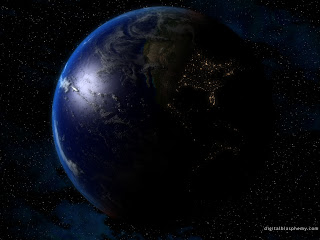from the book
The matter that is visible and currently directly measurable is composed of particles that have been
identified in the physicists’ “Standard Model”. However, the majority of scientists now believe that
this “ordinary matter” makes up less than 5% of the universe. In fact, it makes up less than 20% of all
the matter in the universe. The other more than 80% is composed of invisible matter that has been
dubbed “dark matter” by scientists.
Dark Plasma Theory, published in 2006 by Jay Alfred, argues that dark matter is present in the Solar
System, including on Earth. Evidence shows that the Sun and the Solar System are under the
gravitational influence of invisible dark matter in our galaxy. The embryonic Solar System contained
dark matter. Furthermore, the dark matter particles that have been raining down on Earth every day
and night for the past 4.6 billion years are captured by Earth's gravitational field. There are therefore
many reasons to infer that there are low-density halos of dark matter particles interpenetrating all
the planets, including the Earth - effectively forming, in the case of Earth, (currently) invisible
“counterpart-Earths” that co-rotate and share the same gravitational field as the visible Earth.
The Theory questioned in 2007 if the density of dark matter around Earth was underestimated.
Computations in late 2008, by Stephen Adler of Princeton University and Xu and Siegel from the
University of Arizona, suggest that dark matter density in the Solar System and around Earth exceeds
the galactic halo density significantly and is much higher than previously thought. According to the
Theory’s estimate, the visible Earth is gravitationally coupled to a Jupiter-sized dark matter halo.
The Theory argues that dark matter is largely in the form of plasmas of exotic particles (including
supersymmetric particles such as charginos and neutralinos). It therefore posits a halo composed of
dark plasma (i.e. a plasma of dark matter particles). As dark matter clumped, it created conditions
for a dark biosphere to form.
It has been shown in laboratory experiments over the past ten years that minimal ordinary plasma
cell-systems can be generated in the laboratory. The Theory therefore suggests that minimal dark
plasma cell-systems were generated within the dark halo/biosphere in the early Earth and predicts
the existence of terrestrial dark plasma life forms which evolved from these minimal plasma cell
systems. This dark biosphere was the birthplace of trillions of conscious dark matter life forms over
millions of years. Unlike chemical-based life forms, dark plasma life forms are compatible with life in
a supersymmetric universe.
The matter that is visible and currently directly measurable is composed of particles that have been
identified in the physicists’ “Standard Model”. However, the majority of scientists now believe that
this “ordinary matter” makes up less than 5% of the universe. In fact, it makes up less than 20% of all
the matter in the universe. The other more than 80% is composed of invisible matter that has been
dubbed “dark matter” by scientists.
Dark Plasma Theory, published in 2006 by Jay Alfred, argues that dark matter is present in the Solar
System, including on Earth. Evidence shows that the Sun and the Solar System are under the
gravitational influence of invisible dark matter in our galaxy. The embryonic Solar System contained
dark matter. Furthermore, the dark matter particles that have been raining down on Earth every day
and night for the past 4.6 billion years are captured by Earth's gravitational field. There are therefore
many reasons to infer that there are low-density halos of dark matter particles interpenetrating all
the planets, including the Earth - effectively forming, in the case of Earth, (currently) invisible
“counterpart-Earths” that co-rotate and share the same gravitational field as the visible Earth.
The Theory questioned in 2007 if the density of dark matter around Earth was underestimated.
Computations in late 2008, by Stephen Adler of Princeton University and Xu and Siegel from the
University of Arizona, suggest that dark matter density in the Solar System and around Earth exceeds
the galactic halo density significantly and is much higher than previously thought. According to the
Theory’s estimate, the visible Earth is gravitationally coupled to a Jupiter-sized dark matter halo.
The Theory argues that dark matter is largely in the form of plasmas of exotic particles (including
supersymmetric particles such as charginos and neutralinos). It therefore posits a halo composed of
dark plasma (i.e. a plasma of dark matter particles). As dark matter clumped, it created conditions
for a dark biosphere to form.
It has been shown in laboratory experiments over the past ten years that minimal ordinary plasma
cell-systems can be generated in the laboratory. The Theory therefore suggests that minimal dark
plasma cell-systems were generated within the dark halo/biosphere in the early Earth and predicts
the existence of terrestrial dark plasma life forms which evolved from these minimal plasma cell
systems. This dark biosphere was the birthplace of trillions of conscious dark matter life forms over
millions of years. Unlike chemical-based life forms, dark plasma life forms are compatible with life in
a supersymmetric universe.

No comments:
Post a Comment
leave your opinion